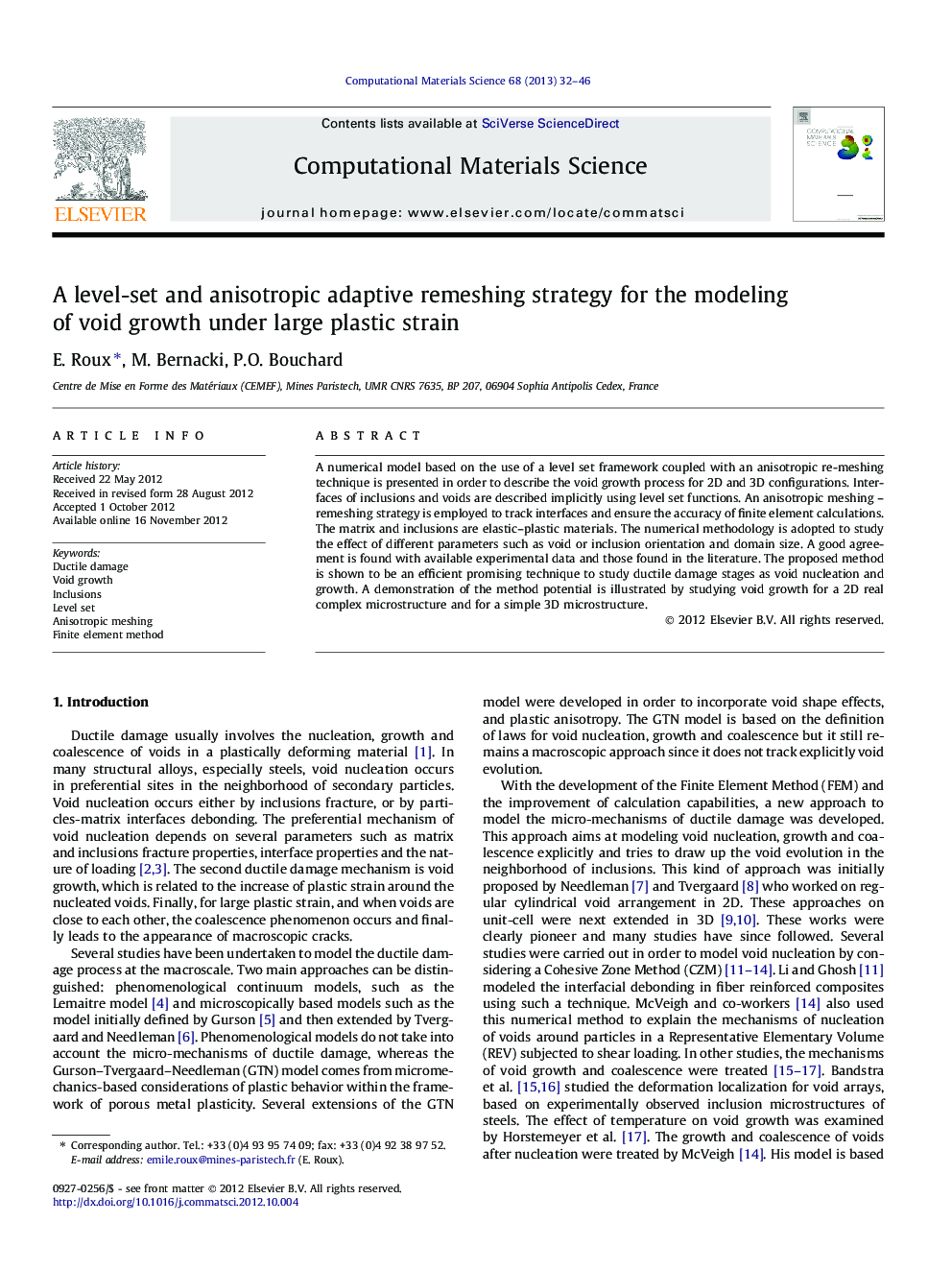| Article ID | Journal | Published Year | Pages | File Type |
|---|---|---|---|---|
| 1561320 | Computational Materials Science | 2013 | 15 Pages |
A numerical model based on the use of a level set framework coupled with an anisotropic re-meshing technique is presented in order to describe the void growth process for 2D and 3D configurations. Interfaces of inclusions and voids are described implicitly using level set functions. An anisotropic meshing – remeshing strategy is employed to track interfaces and ensure the accuracy of finite element calculations. The matrix and inclusions are elastic–plastic materials. The numerical methodology is adopted to study the effect of different parameters such as void or inclusion orientation and domain size. A good agreement is found with available experimental data and those found in the literature. The proposed method is shown to be an efficient promising technique to study ductile damage stages as void nucleation and growth. A demonstration of the method potential is illustrated by studying void growth for a 2D real complex microstructure and for a simple 3D microstructure.
► A level set technique is used to describe interfaces between microstructure phases. ► Anisotropic meshing strategy is used to model voids growth stage for large strains. ► Anisotropic mesh adaptation is done on level-set function and on mechanical fields. ► Plastic strain localization is observed between the micro defects. ► Void growth mechanism is modeled on 2D real microstructure under tensile loading.
